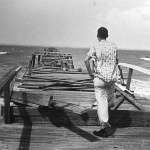We hear awesome stories of pirates all the time. People love pirate stories so much that many films have been made about the subject, the last huge one that certainly comes to mind is the Pirates of the Caribbean movies. But one may wonder who the real-life pirates were, how and where they lived. It’s interesting to note that many of them lived along the waters of the Caribbean and in South America and this means they have had contact with southern Florida too as this was nearby. They might have even used some areas as hide-outs and temporary shelters.
The era of piracy in the Caribbean began in the 1500s and basically, faded into non-existence in the 1830s after the navies of the nations of Western Europe and North America with colonies in the Caribbean began combating pirates with extensive force. The Golden age or period during which pirates were the most successful in their raids and other dealings was from the 1660s to 1730s. Piracy flourished in the Caribbean because of the establishment of numerous pirate seaports such as Tortuga in Haiti, Port Royal in Jamaica and Nassau in the Bahamas.
Pirates were regularly previous mariners experienced in maritime fighting. They were called buccaneers, from the French “boucanier” (one who smokes meat on a “boucan” (wooden casing set over a fire.) By setting up smokey fires and boucans with the readied meat of marooned dairy cattle, these castaways could bait a ship to gravitate toward them for bartering, at which time the marauders could grab the ship. The pirates were later pursued off their islands by provincial authorities and needed to look for another life adrift, where they proceeded with their ship striking. Starting in the sixteenth century, pirate captains enlisted sailors to plunder European merchant ships, particularly the Spanish treasure armadas cruising from the Caribbean to Europe.
It was the French who had set up the primary non-Spanish settlement in the Caribbean when they had established Fort Caroline close what is currently Jacksonville, Florida in 1564, in spite of the fact that the settlement was soon wiped out by a Spanish assault from the bigger province of Saint Augustine.
The French likewise established major new settlements on the sugar-producing islands of Guadeloupe in 1634 and Martinique in 1635 in the Lesser Antilles. In any case, the core of French activity in the Caribbean in the seventeenth century remained Tortuga, the fortified island sanctuary off the shoreline of Hispaniola for privateers, marauders and famous pirates. The fundamental French province on whatever is left of Hispaniola remained the settlement of Petit-Goâve, which was the French foothold that would form into the present day territory of Haiti. French privateers still utilized the makeshift camp harbors in the Florida Keys to loot the Spaniards’ transportation in the Florida Channel, and also to attack the delivery ships that handled the sealanes off the northern shoreline of Cuba.
The history of the pirates is long and terrible indeed, but now you can learn more about them when you visit the museums in Naples, Florida and other parts of the state. There are also dress-up events and Halloween parties thrown by hotels and family-friendly establishments for kids to participate in and enjoy.










